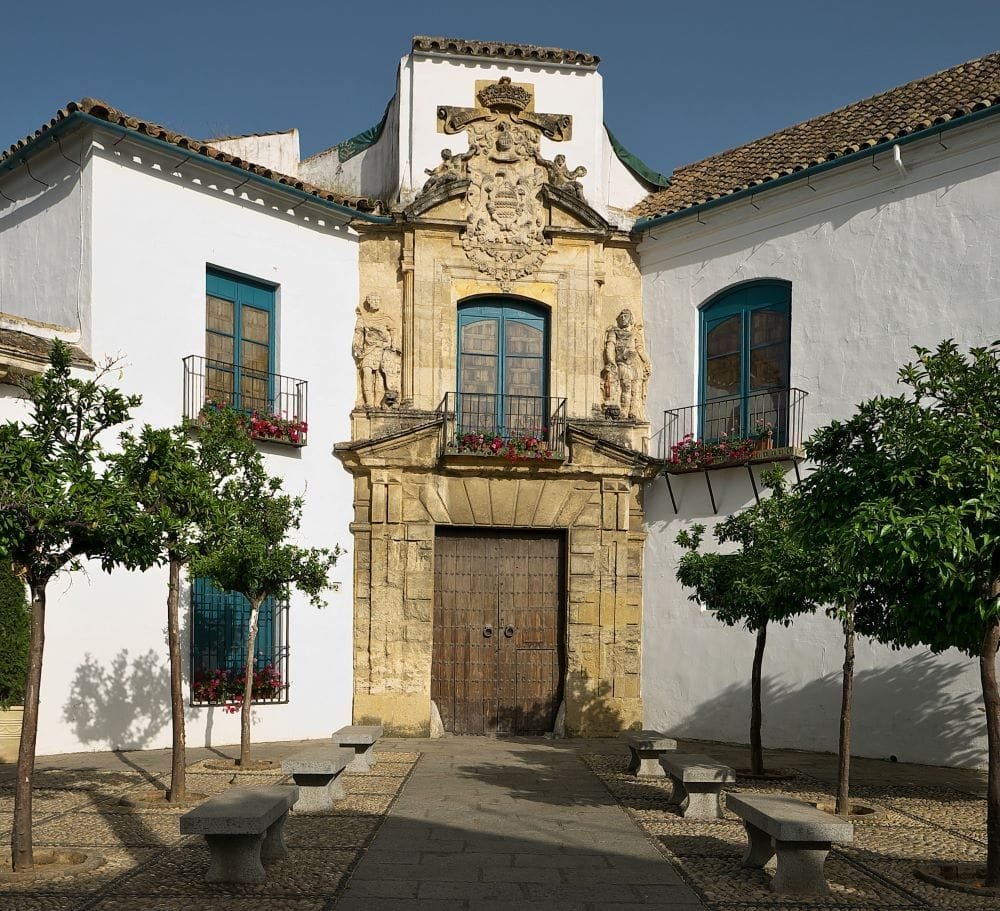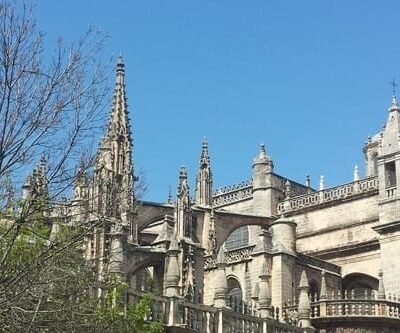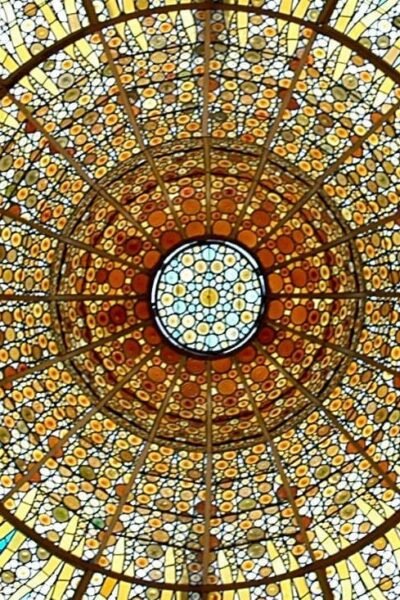Courtyards, Counts, and Quiet Magic: Why Viana Palace (Córdoba, Spain) is the Underrated Patio Museum Locals Love and Most Tourists Miss
There’s a narrow street in Córdoba, not far from the bustling heart of the city, where footsteps slow instinctively. Here, the air carries hints of orange blossom and jasmine, softening the sharp Andalusian sunlight. At the end of this quiet street stands a heavy wooden doorway, discreet yet elegant, marking the entrance to the Viana Palace, Córdoba. Unlike its more famous neighbors—the mighty Mezquita and the proud Alcázar—this palace seems content to remain half-hidden, keeping its splendor subtle and its doors slightly ajar.

Crossing that threshold is like stepping into a novel whose pages flutter gently open, revealing a story told through twelve distinctive patios. Within these shaded courtyards, the Palace of Viana quietly unfolds centuries of Córdoba’s history, captured in intricate azulejo tiles, Renaissance arches, and whispers of aristocratic intrigue. From its beginnings as a noble residence in the 14th century, Viana evolved, gathering stories in every fountain and fresco—echoes left by generations of counts, marquises, and artists.
Today, locals cherish Viana Palace (Córdoba, Spain) precisely because it’s still so blissfully overlooked by most visitors. Travelers who venture inside soon understand why: the beauty here dazzles in murmurs. And the secrets it holds aren’t written on placards—they’re waiting in sunlit corners, in the shifting patterns of shadow and leaf, and in courtyards where Córdoba’s quiet magic thrives.
Post last updated on April 13, 2025 (originally published on February 22, 2024) by Roberta Darie.

- Hiding in Plain Sight: Where is the Viana Palace, Córdoba
- Why the Viana Palace, Córdoba is Different from Most Museums You’ve Visited
- A Palace of Counts and Stories: The History Behind the Viana Palace, Córdoba
- The Living Heart: What to See Inside the Viana Palace
- Not Just for Looking: Things to Do at Viana Palace (Córdoba, Spain)
- When to Visit, How Long to Stay (and How to Make the Most of the Viana Palace)
- Quiet Magic That Doesn’t Say Goodbye
“Slow down, and everything you are chasing will come around and catch you.”
— John De Paola

Hiding in Plain Sight: Where is the Viana Palace, Córdoba
From Córdoba’s bustling Plaza de las Tendillas, it takes less than ten minutes to reach a quieter street lined with whitewashed walls and flower-draped balconies. Yet most travelers never make the stroll. Perhaps they’re distracted by the nearby grandeur of the Mezquita or the Alcázar’s lush gardens. Meanwhile, hidden in plain sight at Plaza de Don Gome, the Palace of Viana patiently awaits discovery, its wooden doors quietly ajar, as if anticipating a visitor who’ll finally slow down and notice.
There’s no sign loudly pointing to Viana Palace, Córdoba, no fanfare leading tourists inside. But behind that modest Renaissance façade, adorned subtly by ivy and shaded by citrus trees, lies one of the city’s richest architectural treasures. Spanning more than 6,500 square meters (around 70,000 square feet), the palace unfolds inward through twelve interconnected patios—each distinct in style and atmosphere, yet all gracefully linked by terracotta tiles and murmuring fountains.
Unlike other Córdoba landmarks, the Viana Palace (Córdoba, Spain) never sought the spotlight. Built as a noble residence and expanded gradually from the 14th to the 19th centuries, its quiet prestige remains intact precisely because it stayed out of travel guides for so long. Today, as you cross from patio to patio, it feels less like exploring a museum, more like overhearing centuries of whispered conversations. Stories told by hidden blooms, tiled benches worn smooth, and walls that know how to keep their secrets.
Why the Viana Palace, Córdoba is Different from Most Museums You’ve Visited
In most museums, history rests silently behind glass, frozen in paint or stone. But at the Viana Palace, Córdoba, history breathes through open patios and shaded pathways. Here, the past isn’t something you simply observe—it surrounds you, changing subtly with each passing season.
What sets the Palace of Viana apart are its twelve distinct patios. Spread across 6,500 square meters (70,000 square feet), each courtyard has its own mood, its own quiet rhythm. Some patios greet visitors warmly, filled with orange trees whose blossoms perfume the air each spring. Others feel more intimate: secret places where walls of jasmine and bougainvillea weave together stories of Córdoba’s rich patio tradition. Living reflections of Andalusian heritage, designed not only to be seen, but felt.
Unlike conventional museums, where artifacts and artworks remain distant and untouchable, Viana Palace (Córdoba, Spain) invites closeness. Visitors can sit beneath centuries-old arches, feel the cool tiles beneath their fingers, and hear fountains murmuring gently. To wander through these patios is to witness an art form still very much alive: a testament to Córdoba’s deep-rooted appreciation of beauty in everyday life, gently preserved within the shaded walls of a noble home.

A Palace of Counts and Stories: The History Behind the Viana Palace, Córdoba
Long before it became a museum, the Viana Palace, Córdoba was a home—though not just any home. Its origins stretch back to the late 14th century, when the first noble residence was built on this site. Over time, the house expanded inward, courtyard by courtyard, evolving into the elegant labyrinth visitors wander today.
Ownership passed through the hands of Córdoba’s elite, but it was the Marquises of Viana who left the most visible mark. Especially in the 19th and 20th centuries, the palace became a reflection of aristocratic taste and social power. Decorative elements from the Renaissance and Baroque periods were added, along with art collections and libraries that still shape the atmosphere of the house. The main entrance, attributed to Juan de Ochoa, dates from the late 1500s and still bears the weight of that legacy—stately, without shouting.
In the 20th century, Sofía de Lancaster, the third and final Marchioness of Viana, played a key role in preserving the palace’s identity. She enriched the interiors, hosted notable cultural figures, and ensured the estate’s survival during a time when many noble houses were fading. Among her guests: painter Julio Romero de Torres, whose vision of Córdoba lives on in quiet corners of this house.
Today, the Palace of Viana remains more than a relic. It’s a repository of personal histories—noble ambitions, artistic friendships, and daily rituals suspended in time. Walking through the Viana Palace (Córdoba, Spain) is less about seeing a monument and more about crossing into a lived world, one that still remembers who once sat under each arch, and who kept the keys.
![Chapel’s Courtyard, Viana Palace, Córdoba (Spain) [Edited Photograph]. Credit: Michel wal. Licensed under CC BY-SA 3.0.](https://itinerartis.com/wp-content/uploads/2024/02/6.-Chapels-Courtyard-Viana-Palace-Cordoba-Spain-Edited-Photograph.-Credit-Michel-wal.-Licensed-under-CC-BY-SA-3.0-1024x683.jpg)
The Living Heart: What to See Inside the Viana Palace
Step beyond the entrance and the Viana Palace, Córdoba begins to unfold like a slow conversation—never rushed, always deliberate. This isn’t a place designed to impress at first glance. Its beauty works differently. It reveals itself in textures, in the play of light across stone and water, in the quiet choreography of space and silence.
1. The Twelve Patios: Where Architecture and Nature Embrace
At the heart of Viana Palace, Córdoba, twelve patios form a quiet tapestry of sunlight, shadows, and scents. Here, Andalusian tradition mixes effortlessly with Renaissance refinement, and nature gently encroaches upon architecture, blurring their boundaries.
Stepping first into the Orange Tree Courtyard, visitors notice symmetry inspired by Islamic gardens. Rows of citrus trees release a subtle fragrance of blossoms, sweet yet sharp, while a single central fountain quietly murmurs beneath the open sky. This layout echoes Córdoba’s Moorish heritage, honoring its deep connection to water, shade, and tranquility.
Around another corner lies the Madama Courtyard, a more intimate space where flowers spill from terracotta pots. Small benches invite quiet contemplation beneath Renaissance arches draped in bougainvillea. It feels less like a patio, more like a secret—something whispered between walls.
Then comes the Patio de las Rejas, named for its ornate ironwork crafted in the 17th century. Elegant grilles frame views into the palace, offering glimpses rather than grand vistas. In this courtyard, geometric tiles and neatly clipped hedges pay tribute to Andalusia’s blend of order and imagination.
Each patio within the Palace of Viana has its rhythm, its particular grace. Together, they form not just a garden or an architectural tour, but an unfolding conversation between past and present, stone and leaf. At the Viana Palace (Córdoba, Spain), architecture doesn’t overshadow nature—it embraces it.
![Patio de la Madama, Viana Palace, Córdoba (Spain) [Edited Photograph]. Credit: Kent Wang. Licensed under CC BY-SA 2.0.](https://itinerartis.com/wp-content/uploads/2024/02/9.-Patio-de-la-Madama-Viana-Palace-Cordoba-Spain-Edited-Photograph.-Credit-Kent-Wang.-Licensed-under-CC-BY-SA-2.0-1024x638.jpg)
2. The Noble Rooms: Aristocratic Echoes in Silk and Stone
Beyond the courtyards of the Viana Palace, Córdoba, a quieter kind of grandeur unfolds. These are not rooms designed to dazzle at first glance. Instead, they draw you in slowly—with creaking wooden floors, dim light filtering through lace curtains, and the steady presence of history in every corner.
The Hall of Tobias, one of the most striking interiors, is named after its 18th-century frescoes depicting the biblical story of Tobias and the archangel Raphael—a revered figure in Córdoba. Restored with care, the room’s murals are framed by delicate garlands and classical caryatids, blending religious narrative with aristocratic opulence. It was never just decoration; it was display. A way to signal refinement, wealth, and spiritual sophistication.
Further inside the Palace of Viana, the Arms Room reveals the family’s military legacy: polished swords, antique firearms, and pieces of armor resting in quiet formation. The Library, by contrast, hums with a different energy. Leather-bound books line the walls, some centuries old, others illuminated by hand. It’s a room that still smells faintly of paper and time.
In the Goya Hall, visitors can admire tapestries woven at Madrid’s Royal Tapestry Factory, based on designs by Francisco de Goya. A custom carpet by Sofía de Lancaster, the palace’s last marchioness, lies beneath the chandeliers—handpicked, like the lamps, from the royal glassworks of La Granja.

3. The Garden: A Final Breath of Green Grandeur
If the courtyards of the Viana Palace, Córdoba are brief verses—measured, intimate, lyrical—then its garden is the closing chapter: expansive, layered, and quietly triumphant. Covering over 1,200 square meters (roughly 13,000 square feet), this formal garden opens out from the more cloistered patios, offering a moment of exhalation after the hush of inner rooms.
Designed in a Baroque style with Islamic echoes, the garden at the Palace of Viana is a thoughtful arrangement of order and wildness. Hedges frame geometric beds, yet within them grow palms, boxwood, acanthus, roses, and centuries-old trees that hint at faraway places and forgotten trade routes. This was not simply a space for leisure—it was a symbol of power, knowledge, and connection to a world beyond Córdoba’s walls.
Many of the plants here arrived through Spain’s imperial networks, and their placement speaks volumes about status and taste. Citrus trees reference Andalusian heritage, while towering oaks and tropical species whisper of colonial expansion and botanical curiosity.
Today, the Viana Palace (Córdoba, Spain) garden invites a slower kind of exploration. Birds dart between branches. Fountains mark time in droplets. It’s a place to wander without purpose, to sit beneath the shade and let the palace recede into the background. And, for a moment, just enjoy nature and breath.
![Patio of the Viana Palace, Córdoba (Spain) [Edited Photograph]. Credit: David Baron. Licensed under CC BY-SA 2.0.](https://itinerartis.com/wp-content/uploads/2024/02/4.-Patio-of-the-Viana-Palace-Cordoba-Spain-Edited-Photograph.-Credit-David-Baron.-Licensed-under-CC-BY-SA-2.0-1024x685.jpg)
Not Just for Looking: Things to Do at Viana Palace (Córdoba, Spain)
The Viana Palace, Córdoba is often called a museum, but that word hardly does it justice. This isn’t a place for hurrying. It asks you to slow down, to pay attention. To sit still under a canopy of ivy and notice how silence shifts when a fountain begins to speak.
Start with a self-guided visit if you are keen to explore at your own rhythm. Maps and placards in both Spanish and English help you navigate the twelve patios and ground-floor rooms. But for more profound context, opt for a guided tour. It grants access to the noble upper floor, where centuries-old tapestries, original furnishings, and family portraits unfold stories of privilege, politics, and quiet ritual. Tours last around 90 minutes, but leave time to wander afterward—this is not a palace to rush.
Visiting in May? Plan your trip during Córdoba’s Festival de los Patios, when the city becomes a garden in motion. The Palace of Viana is a highlight of the event, with its patios in full bloom and open to extended hours. Arrive early to avoid crowds and catch the morning light dancing across stone and tile.
Artists, writers, and photographers will find endless inspiration here. Bring a sketchbook. Take photos of the shadows cast through wrought iron. Note the architectural details—coffered ceilings, glazed tiles, hand-painted murals—each corner holds something worth remembering.
When you’re ready to rejoin the city, head to the nearby Plaza de la Corredera. It’s a five-minute walk, just enough to let the experience settle. Sit down with a coffee. Watch the light change again. And, maybe, open a fresh page.
![Patio de las Columnas, Viana Palace, Córdoba (Spain) [Edited Photograph]. Credit: Benjamin Smith. Licensed under CC BY-SA 4.0.](https://itinerartis.com/wp-content/uploads/2024/02/11.-Patio-de-las-Columnas-Viana-Palace-Cordoba-Spain-Edited-Photograph.-Credit-Benjamin-Smith.-Licensed-under-CC-BY-SA-4.0-1024x683.jpg)
When to Visit, How Long to Stay (and How to Make the Most of the Viana Palace)
Timing matters at the Viana Palace, Córdoba, where light, scent, and silence shift with the seasons. To experience the patios at their most expressive, visit between April and early June, or return in September when the sun softens and the crowds thin. Spring offers an unrivaled display: orange blossoms, climbing jasmine, and flowering geraniums spill over every ledge, scenting the air and coloring each courtyard like a still-life in motion.
Mornings are best for golden light and quiet paths. Arrive just after opening—typically 10:00 a.m.—when shadows stretch long across the tiles and the first fountains have only just begun to stir. For photographers, the soft, angled light offers ideal conditions. Evenings also hold a kind of magic, especially in warmer months when the heat retreats and the patios feel like private sanctuaries.
Set aside at least 90 minutes for a full visit to the Viana Palace (Córdoba, Spain)—two hours if you want to linger, sketch, or journal. Pair your visit with a stop at the nearby Palacio de la Merced or a stroll through Plaza de la Corredera. You can also check out this article, for more inspiration: 12 Museums in Córdoba, Spain You’ll Wish You Had Discovered Sooner.
But remember, this isn’t a checklist destination. It’s best enjoyed slowly, with time to notice the way shadow pools in corners, how ivy moves in the breeze, and how history hums just beneath the surface.
![Patio de los Gatos, Viana Palace, Córdoba (Spain) [Edited Photograph]. Credit: Paolo Trabattoni. Licensed under CC BY 2.0.](https://itinerartis.com/wp-content/uploads/2024/02/8.-Patio-de-los-Gatos-Viana-Palace-Cordoba-Spain-Edited-Photograph.-Credit-Paolo-Trabattoni.-Licensed-under-CC-BY-2.0-1024x652.jpg)
Quiet Magic That Doesn’t Say Goodbye
Back on that narrow Córdoba street, stepping out from the shadows of the Viana Palace, the golden Andalusian sun feels briefly startling. The city resumes—louder, brighter, quicker. But something of the Viana Palace, Córdoba follows. Behind you, in cool courtyards perfumed with jasmine and orange blossom, the whispers of counts and artists linger—soft, insistent. A curve of ironwork. The hush of a courtyard that seemed to breathe.
Unlike Córdoba’s grand monuments, the Palace of Viana doesn’t clamor for admiration. It welcomes you quietly, then lets its details speak in their own time. A fresco half-faded. A book bound in worn leather. A fountain repeating itself patiently, as it has for five hundred years. These aren’t sights you photograph and forget. They return later, unexpectedly—like pressed flowers between the pages of a book you once loved.
Have you ever found a place that stayed with you like that? Perhaps that’s the true secret of the Viana Palace (Córdoba, Spain)—it never really lets you go. Long after your footsteps have left its patios, its quiet magic remains, drawing you back gently to Córdoba, and to the stories still resting in its shade.




